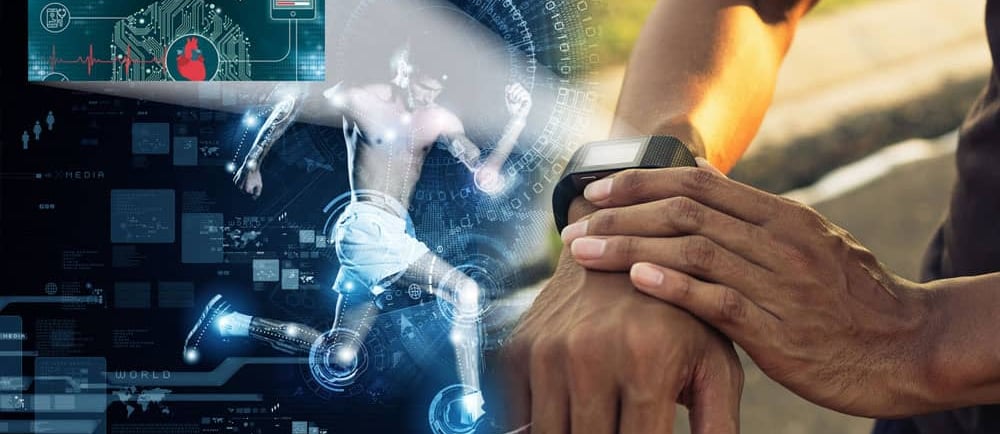Kaydence partners with the CSH to drive innovative solutions in education and healthcare.
How wearable technology is transforming patient monitoring
Wearable technology is revolutionizing patient monitoring by enabling real-time tracking of vital signs, early disease detection, and remote healthcare management. From smartwatches that monitor heart rate and ECG to biosensors that track glucose levels and sleep patterns, these devices enhance personalized healthcare, reduce hospital visits, and improve emergency response. This blog explores the key applications, benefits, challenges, and future trends of wearable technology in transforming patient care and healthcare systems.
RESEARCH
2/8/20252 min read


Wearable technology is revolutionizing healthcare and patient monitoring, offering real-time data collection, improved diagnosis, and enhanced patient care. With devices like smartwatches, biosensors, and remote monitoring systems, medical professionals can track vital signs, detect abnormalities, and provide proactive care. This blog explores how wearable technology is transforming patient monitoring, its benefits, and the future of healthcare innovation.
Key Applications of Wearable Technology in Patient Monitoring
1. Continuous Health Monitoring
Wearable devices enable continuous tracking of vital health metrics such as:
Heart rate & ECG monitoring: Smartwatches and fitness trackers detect irregular heart rhythms and early signs of cardiovascular diseases.
Blood pressure monitoring: Wearable cuffs and smartwatches help hypertensive patients monitor their blood pressure trends.
Blood oxygen levels (SpO2): Devices like pulse oximeters assess oxygen saturation, crucial for respiratory conditions like asthma and COVID-19.
2. Diabetes Management
Wearable glucose monitors allow diabetics to track blood sugar levels in real-time without frequent finger pricks. These devices:
Alert users to high or low glucose levels.
Sync with mobile apps for better insulin management.
Provide data for healthcare professionals to adjust treatment plans.
3. Remote Patient Monitoring (RPM)
Wearable devices enable hospital-grade monitoring at home, reducing hospital visits and improving patient convenience.
Chronic disease patients can be remotely monitored, ensuring timely intervention when health parameters fluctuate.
Smart patches and biosensors continuously track biomarkers and transmit data to physicians.
4. Wearable ECG & Cardiac Monitoring
Smart ECG monitors detect arrhythmias, atrial fibrillation, and heart attacks in real time.
AI-driven analysis improves early diagnosis and reduces emergency cases.
Patients with heart conditions can be monitored without being hospitalized.
5. Sleep Tracking & Sleep Apnea Detection
Smart bands and headbands analyze sleep patterns, breathing, and oxygen levels to detect sleep apnea.
Helps individuals improve sleep quality by providing insights into disturbances and interruptions.
Data can be shared with doctors for treatment recommendations.
6. Wearable Pain Management & Rehabilitation
Smart prosthetics with sensors track movement and provide real-time feedback for amputees.
Neuromodulation wearables help manage chronic pain through electrical stimulation.
Rehabilitation wearables assist in physical therapy by tracking range of motion and muscle activity.
7. Fall Detection & Emergency Alerts
Smartwatches and wearable pendants detect falls and sudden impacts, automatically alerting caregivers or emergency responders.
Crucial for elderly patients and individuals with mobility issues.
GPS-enabled devices help locate patients in distress.
Benefits of Wearable Technology in Patient Monitoring
✅ Early Disease Detection: Continuous tracking helps identify health risks before they become critical.
✅ Personalized Healthcare: Data-driven insights allow tailored treatment plans.
✅ Reduced Hospitalization Rates: Patients can be monitored remotely, reducing hospital admissions and healthcare costs.
✅ Improved Patient Engagement: Wearables encourage proactive health management.
✅ Faster Emergency Response: Real-time alerts enable quicker medical intervention.
✅ Convenience & Comfort: Patients can track their health from home without frequent doctor visits.
Challenges & Future of Wearable Technology in Healthcare
Challenges:
⚠ Data Privacy Concerns: Securing patient health data is crucial.
⚠ Device Accuracy: Ensuring wearables provide precise medical-grade data.
⚠ Integration with Healthcare Systems: Seamless data sharing with hospitals and doctors is needed.
⚠ Affordability & Accessibility: High costs may limit widespread adoption.
Future Prospects:
🔹 AI-Powered Diagnostics: AI-driven analysis of wearable data for predictive healthcare.
🔹 More Advanced Biosensors: Improved accuracy in monitoring complex health conditions.
🔹 Wearable Drug Delivery Systems: Smart patches for real-time medication release.
🔹 Integration with Telemedicine: Enhanced remote consultations based on real-time health data.
Conclusion
Wearable technology is redefining patient monitoring, making healthcare more proactive, personalized, and efficient. From chronic disease management to emergency response, wearables are bridging the gap between patients and healthcare providers. As technology advances, wearables will play an even greater role in preventive care, early diagnosis, and remote health monitoring.
Kaydence Consultancy
Global platform for study abroad solutions, marketing strategy and your efficient research partner
Contact
Get in touch
director@kaydenceconsultancy.com
+9188916082
© 2025 Kaydence Consultancy. All rights reserved.
Designed with care | Powered by Innovation
Navigation
Company
Career
Legal
M G Road, Kochi, Kerala, India
